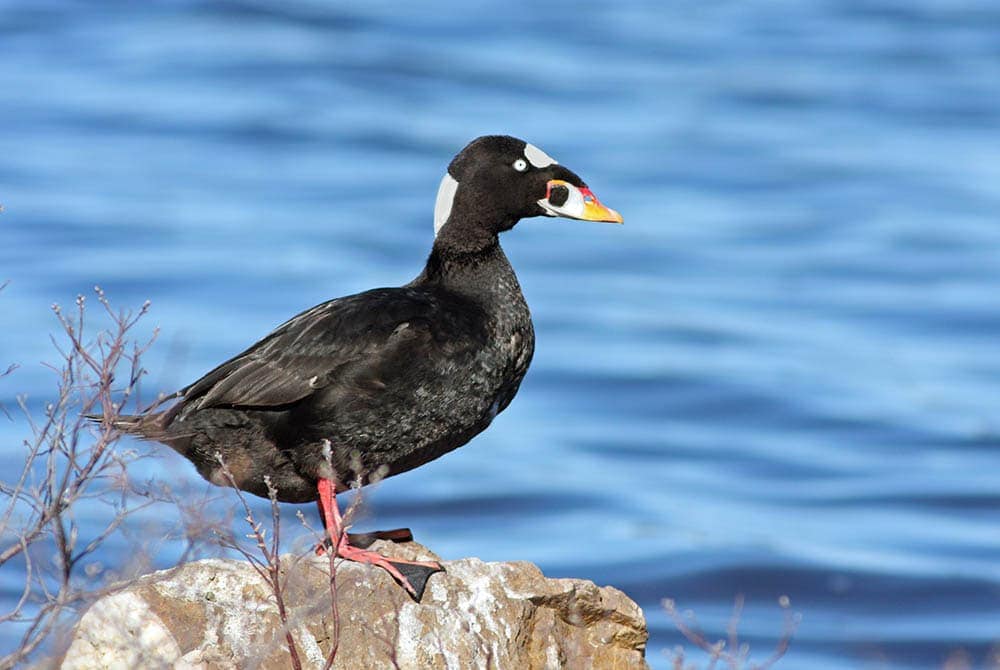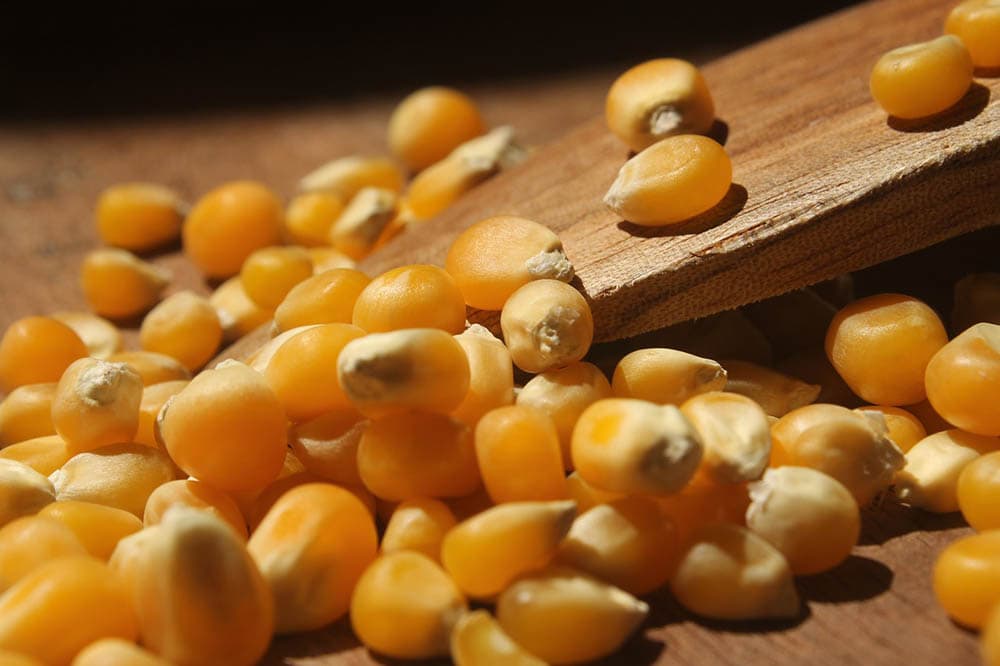What to Feed Wild Ducks – 10 Great Options
Last Updated on

People love to feed birds at home and in the wild as a sign of affection. While this practice is wrong, you must take caution when feeding wild ducks. Firstly, these waterfowls are fantastic and meant to feed themselves rather than rely on humans. Secondly, feeding ducks in public spaces often leaves the grounds dirty and inhabitable for humans. If you must feed ducks, there are good food options with great nutritional value.

Overview of Wild Ducks
There are many kinds of wild ducks, all belonging to the Anatidae bird family. Smaller sub-groups emerge based on their appearance and other shared traits. On the whole, there are twelve types of ducks known to birders:
- Dabbling duck: The most common species is the mallard
- Eider ducks: These have lush feathers to protect them from Arctic temperatures
- Merganser: Have thin, serrated bills that help in hunting fish
- Diving duck: As the name suggests, these birds are agile swimmers
- Teal: These waterfowls have a unique plumage and are treated as game birds
- Perching ducks: These have webbed feet to secure their grip on tree branches
- Scoter: Have colored beaks and primarily reside in marine habitats
- Goldeneye: Have yellow eyes, an iridescent sheen, and a white plumage
- Sea ducks: Live in coastal habitats and travel inland during nesting
- Whistling duck: Unlike other birds, these ducks have long legs and neck
- Stifftail: These birds use their spiky tails for buoyancy when swimming
- Domestic ducks: These waterfowls are not wild and primarily serve as pets
The 10 Things to Feed Wild Ducks
Like geeks and swans, wild ducks are omnivorous and capable of fending for themselves. They only appear to beg for treats for human interaction. There is a longstanding debate among conservationists about feeding wild ducks, as they worry it may impede their migration patterns. Remember, birds travel in search of food and favorable temperatures, so why move if there is a consistent food supply?
Park officials also have reservations about this practice. Throwing food to wild ducks can result in overfeeding, and the leftovers cause pollution. Also, the pristine grounds of city parks are compromised by heaps of trash and scattered food. Rotting food attracts rodents, which in turn cause diseases even to humans.
With these considerations in mind, humans can still feed wild ducks in most places. If there are no ordinances prohibiting this practice, choose the following nutritious foods:
1. Corn

Fresh, dried, or frozen corn is an excellent food for wild ducks. Grind dried corn coarsely to aid feeding, especially when dealing with young ducks. However, avoid tossing canned corn in aquatic habitats where fish thrive, as they cannot digest them properly.
2. Rolled Oats and Grains

If you are tempted to share your breakfast with ducks, do not feed them bread! This seemingly innocent gesture can yield a lot of harm to their health. For instance, they can develop angel wing syndrome, making their wings deformed. This condition further impedes their natural flight response.
Rolled oats—the uncooked version—is a safer option for wild ducks. Wheat, barley, and other grains are ideal for ducks too.
3. Rice

You can feed wild ducks uncooked or cooked rice. They enjoy picking it from the ground, and due to its small size, rice grain is easy to swallow. There are no known restrictions about white or brown rice, so feel free to share whatever is in your pantry.
4. Fruits

Ducks can eat a copious amount of fruit, but not the citrus family, as these fruits are too acidic. Watermelon, bananas, and grapes (cut in half) are all great for these waterfowls. Consume the fleshy part of strawberries, then leave the green tops for the birds. Other kinds of berries include raspberries, golden berries, blueberries, etc. If you have a surplus of fruit lying around at home, bring them to your next picnic at the park.
5. Pit or Stone Fruits

These are fruits with a seed in the center—for instance, peaches, avocado, plums, cherries, apricots, etc. Please remove the seed before feeding the ducks.
6. Peas

You can feed wild ducks fresh, canned, or frozen peas. This legume is laden with vitamin A, K, and C, iron, phosphorous, and folate. Peas are also high in fiber, and this is good for digestion.
7. Birdseed

These assorted seeds include sunflower, millet, and any mixture of seeds you can find in a pet food store. Popular brands include Kaytee waste-free bird seed blend and Lyrics fine tunes. Of course, if you keep domestic birds, whatever seed blends you feed them are ideal for wild ducks too.
8. Vegetable Peels

Once you prepare vegetables for cooking, the peels often end up in the garbage disposal. These could be the skin of cucumbers, potatoes, carrots, radishes, and other vegetables you consume regularly. You can now start saving them for your next trip to see wild ducks.
9. Worms

Finding worms to feed wild ducks seems unconventional, but they have many nutritional benefits. Mealworms and earthworms are part of a wild duck’s natural diet. They are high in proteins, amino acids, and iron. Ducks in the wild, however, should have no trouble finding worms, insects, fish, and plants without human intervention.
10. Peanut Butter

Peanut butter is rich in calcium, potassium, magnesium, and iron. Birds that often eat nuts will find no trouble eating peanut butter, and it is easy to pick in small portions. Soft butter is ideal for smaller birds, while large birds prefer whole or shelled nuts like pistachios and almonds.
While peanut butter is a staple in many homes, there are fears about feeding it to waterfowl. Some people fear it can coat the wings and inhibit flight, while others fear birds can choke on peanut butter. If you are afraid of the butter sticking inside the bill, mix it with flour or dry oatmeal to get a crumbly texture.

Preening in Birds
Regarding butter coating their wings, birds have an inherent way of solving this – preening. Preening is the process in which birds groom themselves. Ducks, and generally other avian species, have thousands of feathers making up the plumage. They fluff their feathers routinely to keep them tidy and remove grease like peanut butter or mud.
The uropygial gland secretes oils that keep feathers waterproof and enhance flexibility during flight. Birds spread around this oily substance when preening. Don’t worry about birds soiling their feathers with soft butter; the dirt comes off during preening. Other benefits of preening are as follows:
- Removing parasites hiding in the plumage
- Moisturizing feathers to increase their strength
- Optimizing insulation during harsh winters
- Enhancing their appearance to attract mating partners
- Arranging feathers in an aerodynamic way to ease flight
- Bonding with mates where birds groom each other (allopreening)

Caution When Feeding Wild Ducks
The above food options are safe for ducks, but you should not overfeed them. Conservationists advise other measures when it comes to feeding waterfowls:
- Adhere to laws prohibiting the feeding of wild ducks
- Don’t feed them if there is uneaten food around
- Keep a safe distance from large birds as they are prone to aggression
- Avoid disturbing or chasing ducks, especially the young ones
- Offer bite-sized pieces to avoid choking
- Gather and dispose of trash properly
There are many feeding options for wild ducks. Most of the food humans consume is safe for ducks too, but not everything will benefit their health. Vegetables, fruits, and seeds have a high nutritional value and are some of the best choices. Of course, you can also buy suitable feeds from the store.
Don’t forget to adhere to ordinances regarding feeding wild birds to avoid penalties and keep the environment clean.
Featured Image Credit: Mircea Costina, Shutterstock
About the Author Robert Sparks
Robert’s obsession with all things optical started early in life, when his optician father would bring home prototypes for Robert to play with. Nowadays, Robert is dedicated to helping others find the right optics for their needs. His hobbies include astronomy, astrophysics, and model building. Originally from Newark, NJ, he resides in Santa Fe, New Mexico, where the nighttime skies are filled with glittering stars.
Related Articles:
10 Types of Hummingbirds in Arkansas (With Pictures)
8 Types of Hummingbirds in Nebraska (With Pictures)
5 Types of Hummingbirds in Idaho (With Pictures)
3 Types of Hummingbirds in Mississippi (With Pictures)
8 Types of Hummingbirds in Kansas (With Pictures)
5 Types of Hummingbirds in West Virginia (With Pictures)
5 Types of Hummingbirds in Ohio (With Pictures)
Where Do Nuthatches Nest? Nuthatch Nesting Habits Explained
